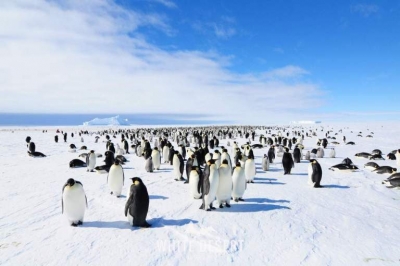
Contrary to popular belief, the largest desert in the world is the Antarctic Desert. Located over the South Pole and covering all of the land of Antarctica, this massive ice sheet receives very little rainfall and is considered a desert. The definition of desert is not vast stretches of sand dunes and high temperatures, but a piece of land that receives very less annual precipitation in the form of rain, snow, mist or fog. In the last 30 years of time, the average annual rainfall at the South Pole is just over 10 mm. Although there is more precipitation towards the coast, the continent as a whole has very little precipitation and that is enough to classify the region as a polar desert. Antarctica is also the coldest, driest, and windiest continent, with the highest average elevation among all the continents in the world.
The Russian expedition headed by Fabian Gottlieb von Bellingshausen and Mikhail Lazarev led to the discovery of the Antarctic ice shelves. After this, French, American, and British expeditions led to more exploration in the region. A Norwegian team was first confirmed to have landed in Antarctica in the year 1895. Later, some British explorers became the first to reach the magnetic South Pole in 1909, and the geographic South Pole was first reached in 1911 by some Norwegian explorers.
About 30 countries govern Antarctica and are parties of the 1959 Antarctic Treaty System. According to the treaty, military activity, mining, nuclear explosions, and nuclear waste disposal are all prohibited in the region. India’s first expedition to Antarctica landed there on January 9, 1982. India has set up three research stations in Antarctica, the first being ‘Dakshin Gangotri’ established in 1984. In 1989, it was re-established and is being used as a supply base and transit camp. The second station ‘Maitri’ was established in 1988 and the third base ‘Bharati’ was established in 2015. In line with the Antarctic Treaty System, Bharati can be completely disassembled and removed without leaving even a brick behind.
This polar desert is home to several volcanoes as well. Of those, two of them are active. Mount Erebus, which is the second-highest volcano in Antarctica, is the southernmost active volcano of our planet. The second active volcano is located on Deception Island, which is a volcanic caldera in the South Shetland Islands.
Picture Credit : Google




